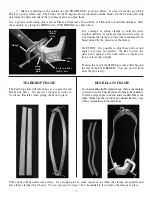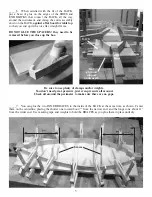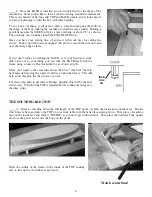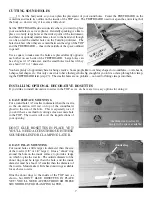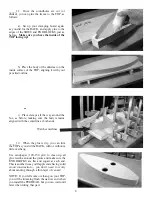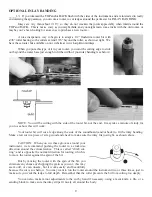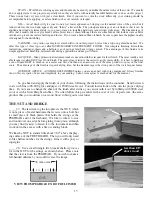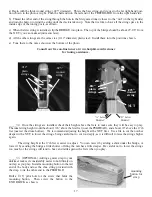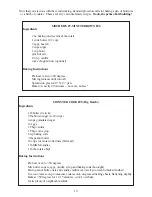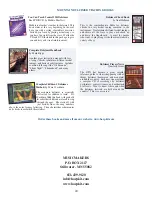
_____21. Check the PEGHEAD so see how it matches the width of the fretboard. The
instrument looks best if these two parts meet with the same dimension, and that may
require a little tapering or extra shaping on the peghead, as shown at right.
It also looks best if you sand the sharp corners to make the peghead feel smooth and nice
in your hands. Use fairly fine (180-220 grit) sandpaper for this. Be sure to leave the end
square and flat that will be attached to the instrument body.
INSTALLING THE PEGHEAD
Narrower end of
dulcimer body
TOP
SIDE
END
BLOCK
cut away
overhang here
_____22. Now you are ready to install the PEGHEAD onto the body. Here is where
you could embarass yourself if you are not paying attention.
The PEGHEAD will
be glued first and then screwed to the narrower end of the body.
If you install
it at the wider end, it will work just fine, but other dulcimer players will tell you,
hopefully in a quiet voice, that you assembled it backwards....
a) If you left some overhang on your TOP panel, you’ll need to cut away a small sec-
tion to make room for the PEGHEAD, as shown. This wood is thin, so it should cut
quite easily. Use a small saw to cut the ends of the notch flush to the END BLOCK,
and then switch to a sharp razor knife to make the longer cut across the grain.
Several passes should get through it, and you can clean up any roughness with a file
or sanding block.
Obviously, if you trimmed your TOP panel flush with the END BLOCK earlier, you
can skip this step.
b) Test the fit of the PEGHEAD to the END BLOCK as shown in these photos
showing various perspectives. The important thing is to keep it centered and square
on the END BLOCK.
Notice how the bottom of the PEGHEAD does not interfere with the overhang on the
BACK. In fact, if you have an overhang there, you can let the PEGHEAD rest against
that ledge.
Notice also, how the small ledge for the NUT stands about 1/8” above the surface of
the TOP panel. If you have no overhang on the BACK panel, you should raise the
PEGHEAD to approximately this height on the END BLOCK. Perfection is not neces-
sary here, however, because the NUT is plenty tall, and you’ll be trimming it down later.
c) When satisfied with the position of the PEGHEAD, pencil the outline of it, and then
glue it in place.
Don’t install the screw yet.
We just stand the instrument on end and
let the PEGHEAD dry first.
BACK VIEW
SIDE VIEW
NUT
sand sharp
corners
leave
this
end
square
TEARDROP PEGHEAD
HOURGLASS PEGHEAD
sand sharp
corners
leave
this
end
square
taper peghead
to fit fretboard
shape peghead
to fit fretboard
12



